The history behind the artifacts
Skidegate House Models: From Haida Gwaii to the Chicago World’s Fair and Beyond
by Robin K. Wright (foreword by Nika Collison)
Vancouver: UBC Press (co-publication with University of Washington Press), 2024
$60.00 / 9780774870641
Review by Grant Keddie
*
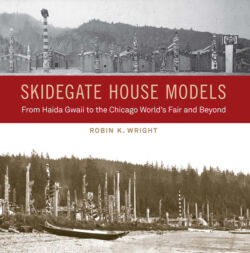
The preface of this book, by Jisgang Nika Collison, of the Kaay’ahl Laanas clan, provides an excellent present day Haida perspective:
Despite massive population loss and colonial regimes, our Ancestors preserved as much Haida knowledge as possible by employing subversive tactics and by working with anthropologists and other foreigners to record our knowledge. We started coming back out through the art, through the poles.
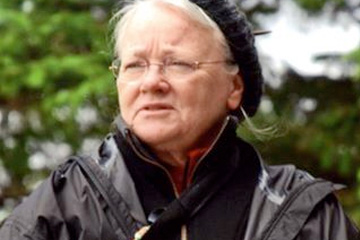
This book is a masterpiece on Haida culture by art historian and curator, Robin K. Wright and the Haida people. It is about the building and exhibit of a model Haida village, HlGaagilda Ljnagaay, known in the English language as Skidegate. The large model of 29 houses and 42 memorial poles was created by 17 Haida artists for the 1892 World’s Fair in Chicago. It is, however, about far more than that.
What is of significance about this book is recognizing and piecing together the names of the individual Indigenous Haida participants, their artistic creations and their clan genealogy, framed in the context of changing Haida culture.
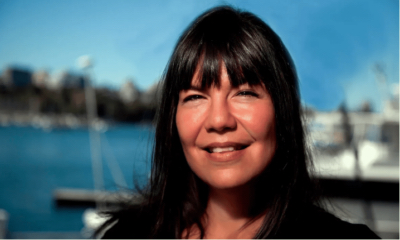
As a curator of archaeology at the Royal B.C. Museum for 50 years I can appreciate that the sheer volume of work needed to piece together the exhibit models of houses and poles with written records, photographs, people and Haida traditions, is something few people would be willing to undertake.
Over the years I have read the correspondence, field notes and publications of most of the non-Indigenous anthropologists and others mentioned in this book. In extracting information from museum and archive records it is important to know the history and circumstances under which it was collected and the people that did the collecting, in order to judge the quality of the information acquired.
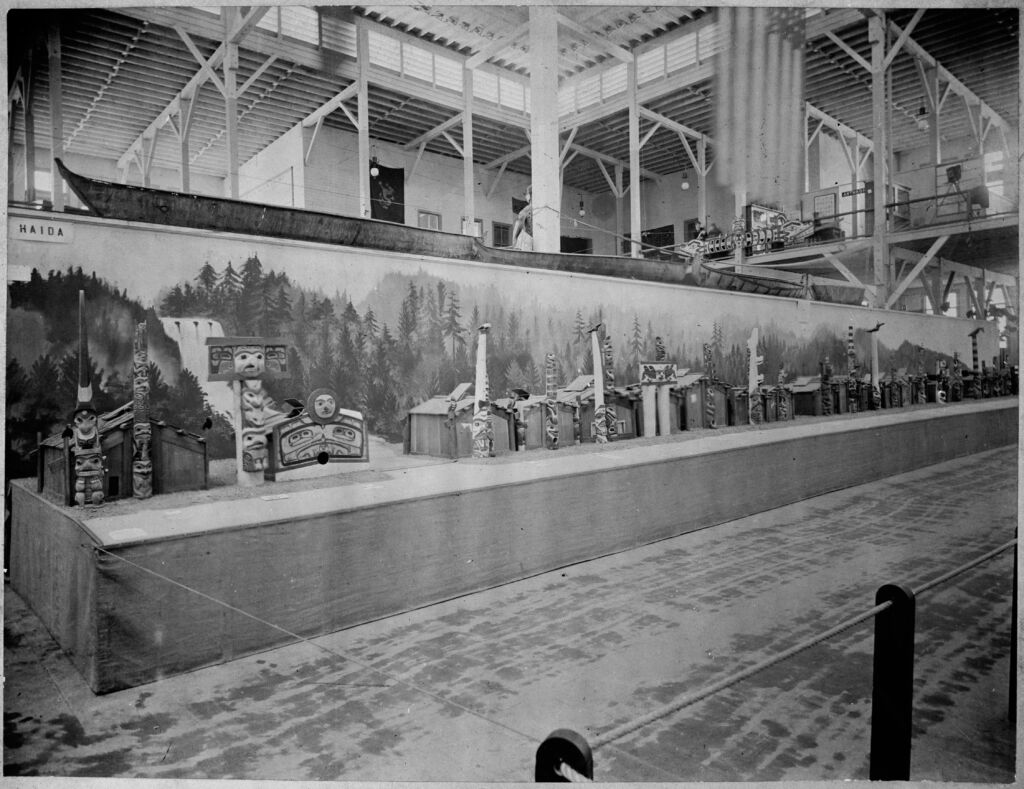
I often observed two of the model houses in the Royal BC Museum mentioned in this story. They were purchased from James Deans who played a key role in commissioning the making of the Haida models for the 1892 World’s Fair. I always wanted to know the bigger story of which these were a part. James Deans, was not from the academic world. Deans worked from 1852 on the Craigflower Farm of the Puget Sound Agricultural Society, mostly as a shepherd, keeping detailed records as he took care of sheep. He had a great appreciation for his own Scottish culture as the bard of the St. Andrew’s & Caledonian Society and the Sir William Wallace Society. This, and his long participation in the Victoria Natural History Society, and his working with Indigenous peoples developed his interest in Indigenous cultures. Although he grew up in a world where it was acceptable (not illegal) to dig up his Scottish ancestors, it is sad that he thought it acceptable to assist a few others is doing so in British Columbia.
One of the popular features of the RBCM Indigenous exhibits has been the model village of Skedans produced by the Museum’s talented carver John Smyly. John undertook the meticulous and detailed work of measuring and drawing the decaying houses and poles in Haida Gwaii, matching these with early photographs and carving models of them to a scale of five-sixteens of an inch to a foot.
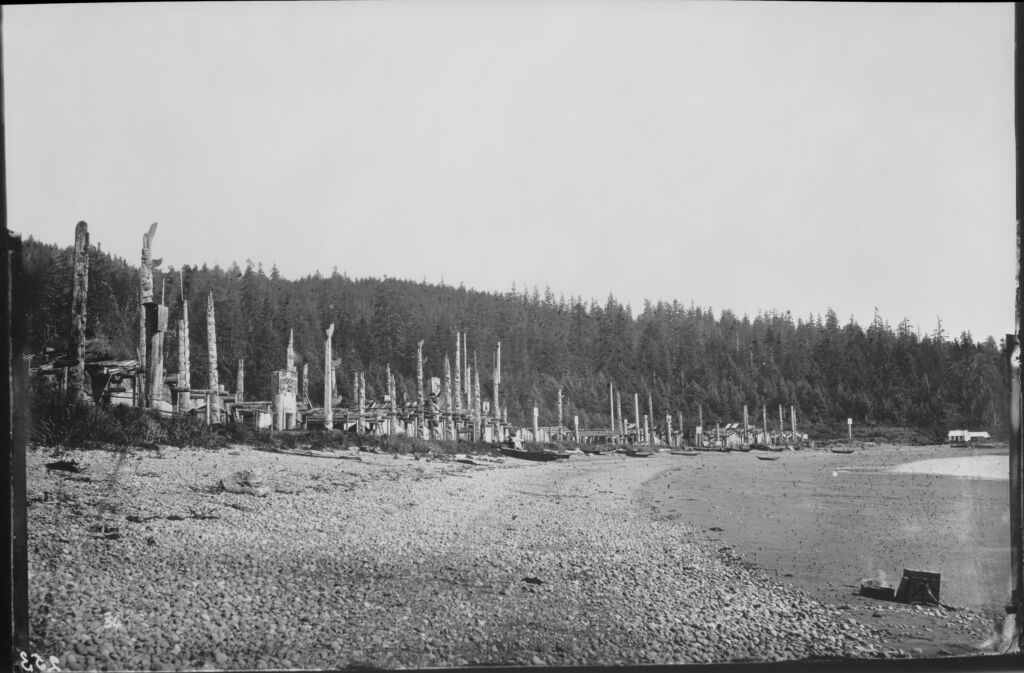
In 1957, John participated in a joint project of the Provincial Museum and the University of British Columbia in consultation with the Haida to visit the Haida villages of Skedans and Ninstints. This eventually led SG̱ang Gwaay Llnagaa (Skungwai), the village of Ninstints being declared a UNESCO World Heritage Site in 1981. John was hired by the museum in 1965, to produce the model village of Skedans. John and his wife Carolyn produced some of the results of his work in their book Those Born at Koona. This project did not involve the close interaction with Haida people as in Wright’s book, but in it they said:
We hope that the errors and omissions we may have made will cause some Haida person to say, ‘I can do better than that,’ and set about the task as it should be done, written and illustrated by the descendants of those who once lived at Koona.
Now 60 years later, we see an important and classic movement in this direction.
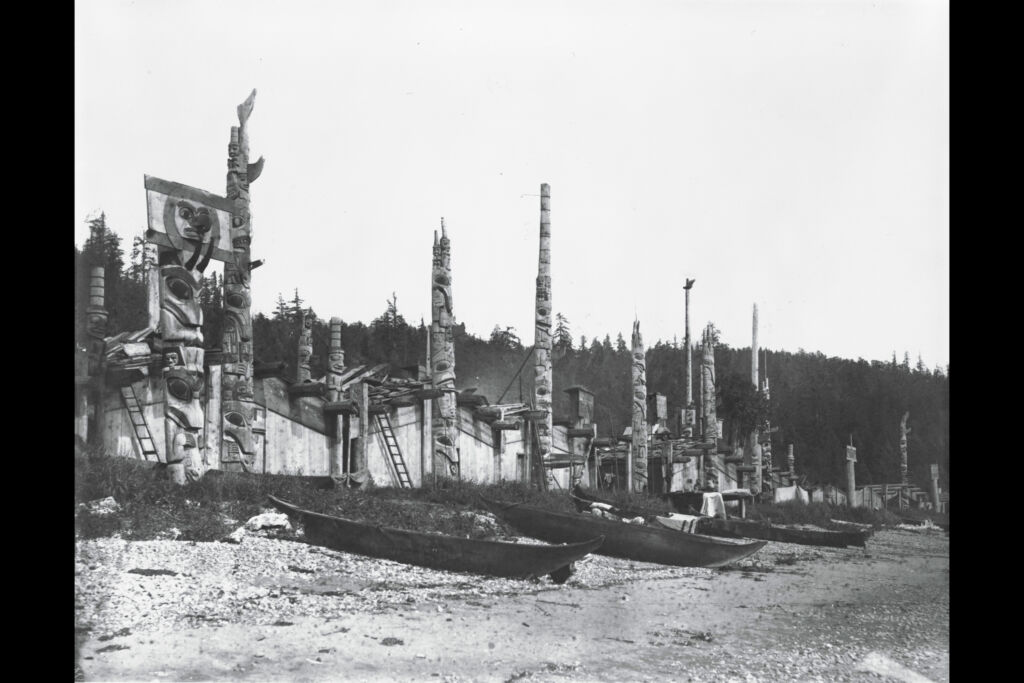
Models
The subject of models is something that is not often written about, yet large portions of museum collects are often models, never used as a part of traditional Indigenous cultures. We are all familiar with model totem poles and model canoes, but there are many other full size model artifacts, such as hats, spindle whorls, arrows, paddles, canoe bailors, fish traps, fishing equipment and clothing that make up museum collections. In cases where certain kinds of artifacts were no longer available to purchase, Indigenous artists were contracted to make them by both individual collectors and museums.
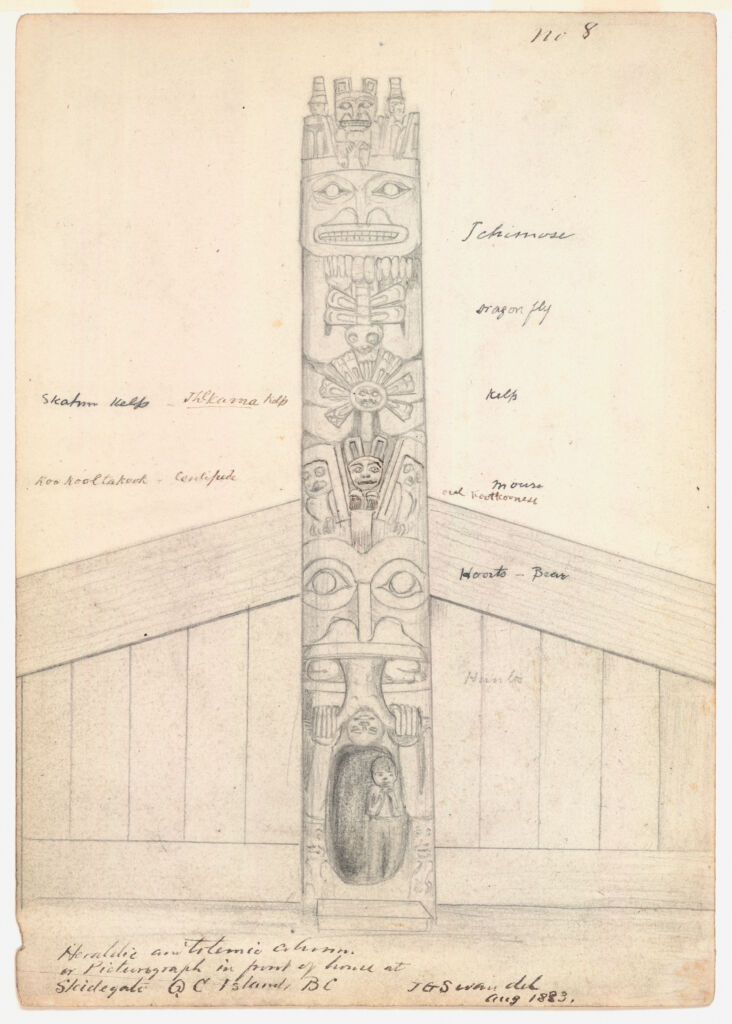
Much of the Interior Indigenous clothing in the RBCM was purchased as a result of the activities of, the strong supporter of Indigenous rights, James Teit. He worked with his Nlaka’pamux, Spence’s Creek band relatives, in recreating model clothing as it once was or repairing old clothing with new, but traditionally correct, additions. Teit comments on the importance of models in Museum collections in a letter to linguist Edward Sapir in 1915:
I tried to sell my collection to Mr. Heye in New York but he is willing only to buy those things in it which have actually been in use no matter how good the others are … his buying only things which have seen actual service is not on the whole the best method of showing the old culture of an area. Specimens in use now a days are generally more or less modified and not true types of the old culture although of course they have their value.
It would be impossible to get a clear and full idea of the old material culture of the area …by purchasing specimens only of things now in use. The only way to do is to obtain from the Indians who have the knowledge, specimens made by them which are true copies of the things formerly in use. Most of my collection consists of this kind of material.
Many of the artifacts in RBCM collection, were made by Indigenous artists to sell and not actually used as part of traditional practices. Over the years Indigenous women made many thousands of traditional and non-tradition baskets and other woven materials. Most of these were sold to non-Indigenous people. They ended up time and again in second hand stores and private collections. The information that may have come with them was lost over time. Once these had some weathering they would be sold as “old baskets,” sometimes of a particular culture. The latter is why most baskets in the Museum are, regrettably, missing the names of the women who made them and details of where they came from.
The making and selling of artifacts by Indigenous people are part of an ongoing Indigenous history. Women making baskets, beaded moccasins and gloves became an important component of family income in the mid 20th century. This and many other stories remain to be told.
This book revolves around models, but is so much more. It is of great value to Haida people for their own history. It should be read by everyone interested, not only in Haida culture, but in cultures of the Northwest Coast.
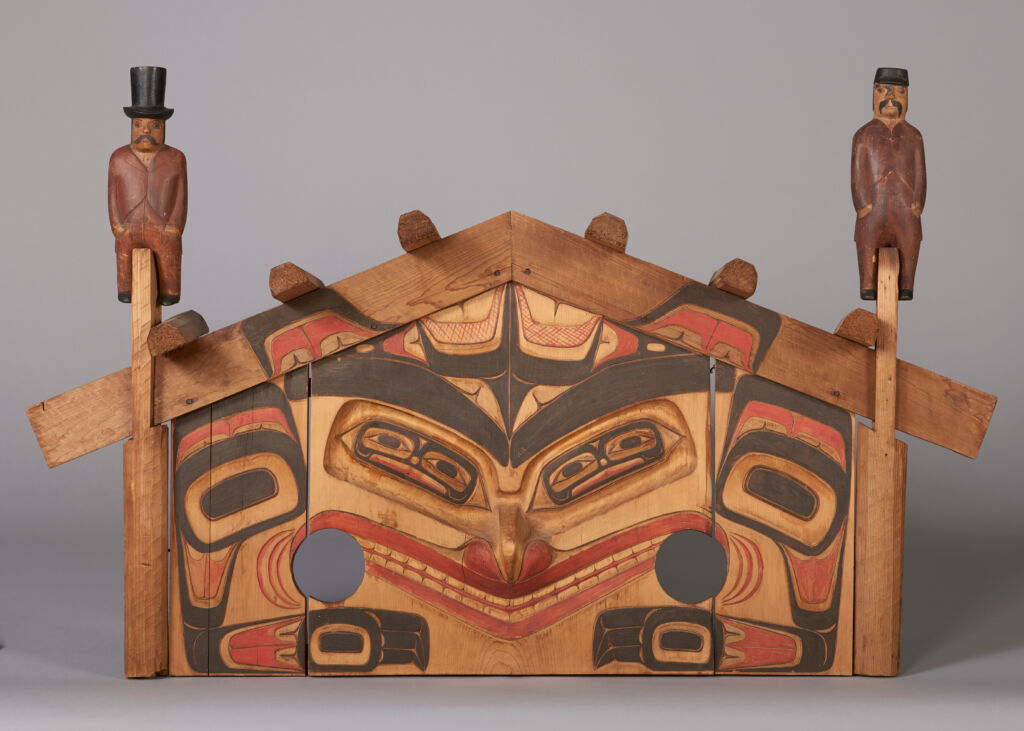
*
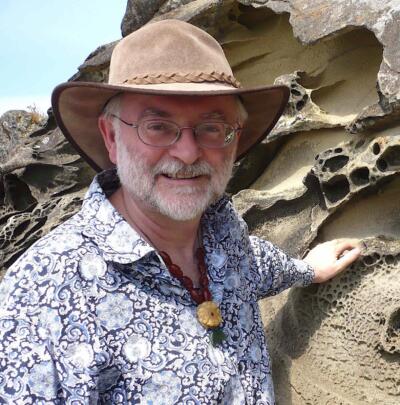
Grant Keddie retired in 2022 after fifty years as Curator of Archaeology at the Royal BC Museum. His job involved all aspects of research, collections, public programming, and fieldwork throughout British Columbia. He is known for his wide range of interests related to both human and natural history and for making and using stone and bone tools. He has published many articles from ethnohistory to artifacts and the megafauna of BC, and is author of the popular book Songhees Pictorial: A History of the Songhees People as Seen by Outsiders, 1790-1912 (Royal BC Museum, 2003). [Editor’s note: Grant Keddie has also reviewed Dig Deep: Connecting Archaeology, Oceans and Us by Nicole F. Smith, and Wanderings of an Artist Among the Indians of North America (1859, new edition 2016), by Paul Kane and edited by Kenneth Lister, for The British Columbia Review.]
*
The British Columbia Review
Interim Editors, 2023-24: Trevor Marc Hughes (non-fiction), Brett Josef Grubisic (fiction)
Publisher: Richard Mackie
Formerly The Ormsby Review, The British Columbia Review is an on-line book review and journal service for BC writers and readers. The Advisory Board now consists of Jean Barman, Wade Davis, Robin Fisher, Barry Gough, Hugh Johnston, Kathy Mezei, Patricia Roy, Maria Tippett, and Graeme Wynn. Provincial Government Patron (since September 2018): Creative BC. Honorary Patron: Yosef Wosk. Scholarly Patron: SFU Graduate Liberal Studies. The British Columbia Review was founded in 2016 by Richard Mackie and Alan Twigg.
“Only connect.” – E.M. Forster